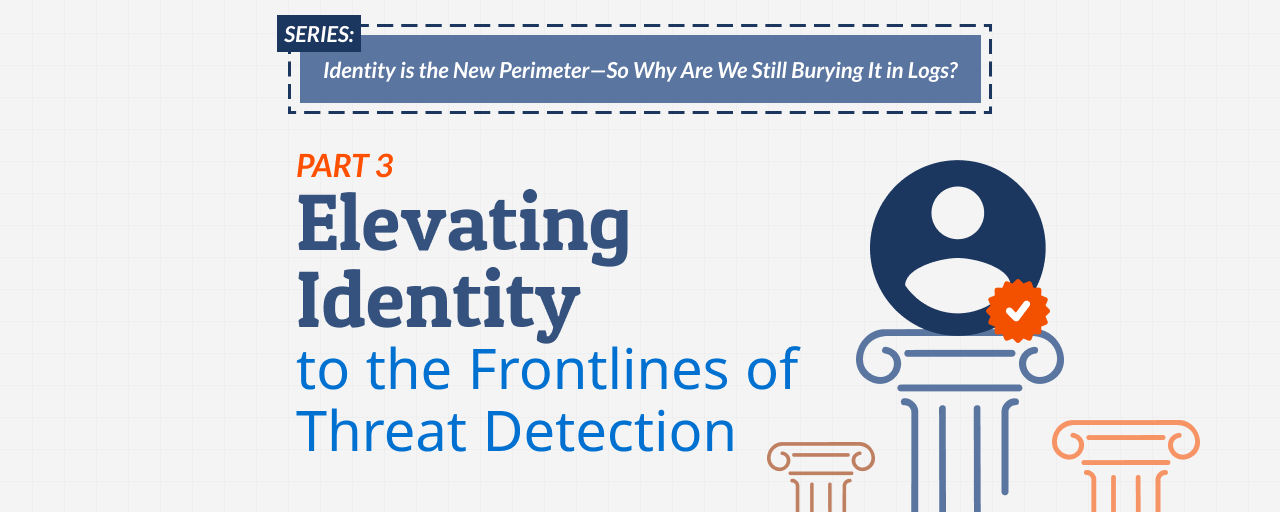Cookie Consent
By clicking “Accept”, you agree to the storing of cookies on your device to enhance site navigation, analyze site usage, and assist in our marketing efforts. View our Privacy Policy for more information.

This is the 3rd entry in our 3-post series, "Identity is the New Perimeter—So Why Are We Still Burying It in Logs?"
-----
We’ve established the problem: attackers are logging in, not breaking in. SIEMs are too slow and generic. IAM vendors are stuck in the past. And behavioral analysis rooted in identity is the only way forward. So what does a modern identity-centric security model actually look like?
It starts with rethinking how identity telemetry is collected, enriched, and acted upon. Not as another log stream, but as a highly valuable layer of threat intelligence.
That means:
This specialized identity observability layer is purpose-built for catching behavior that IAM and SIEM miss entirely.
Identity vendors have spent years convincing enterprises that they’re the new perimeter. But to do that effectively, they would have evolved their platforms to detect post-authentication threats, and that hasn’t happened. Instead, they’re still handing out tokens like candy and hoping a downstream tool catches the fallout.
Okta, Ping, ForgeRock, and others still frame their value around control—not visibility, detection and response. They offer just enough security to pass an audit, but not nearly enough to detect modern adversaries.
This is where ITDR—Identity Threat Detection and Response—emerges as the new solution approach and critical security bridge. It’s not just any new security category, its recognition that identity itself is the source of most breaches today and a new more effective approach is needed.
ITDR requires a dedicated set of capabilities and features including:
It’s what the security industry needs, and it’s what identity vendors have failed to deliver.
You can’t afford to treat identity security as an afterthought. The external threats are growing and they’re increasingly logging in with valid credentials. And they’re counting on your SIEM and your IAM provider to stay exactly as they are: blind to the threats and unable to respond.
It’s time to elevate identity security into the spotlight—not as legacy plumbing, but as the new tools and tactics needed to defend your organization against an increasingly dangerous battleground.
-----
In PART 1, we explain how SIEMs miss modern threats by treating identity activity as basic logs, allowing attackers using valid credentials to go undetected. Identity signals get lost in the noise, and by the time they’re analyzed, it’s often too late to stop the attack.
In PART 2, we explore why behavioral analysis—rooted in identity—is the only way forward to address these challenges, and how a new approach is needed rather than continued legacy thinking from IAM vendors and SIEM providers.